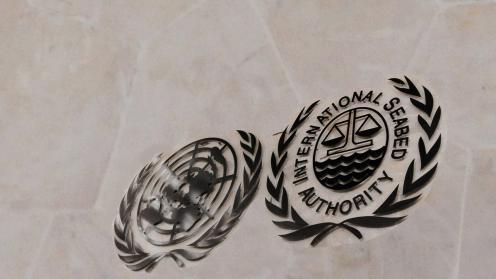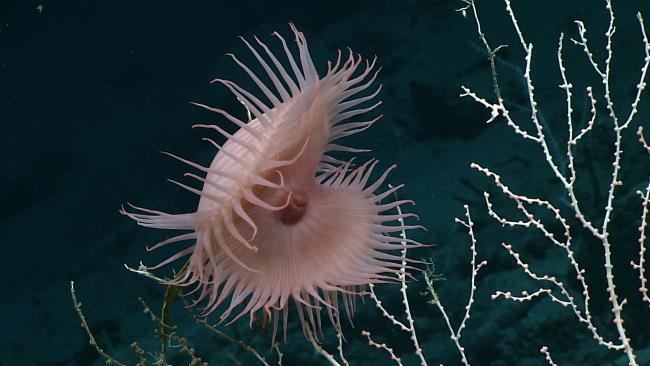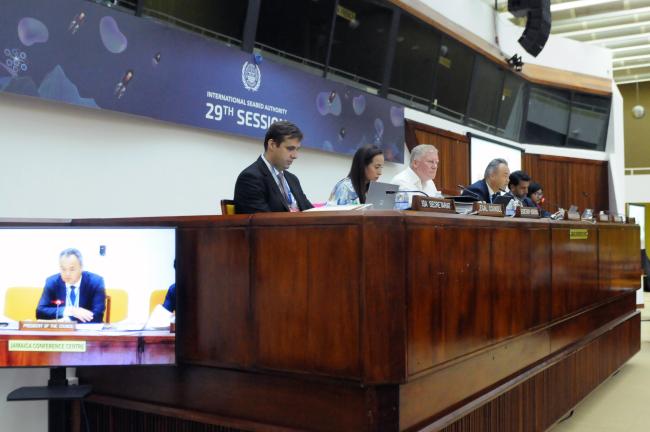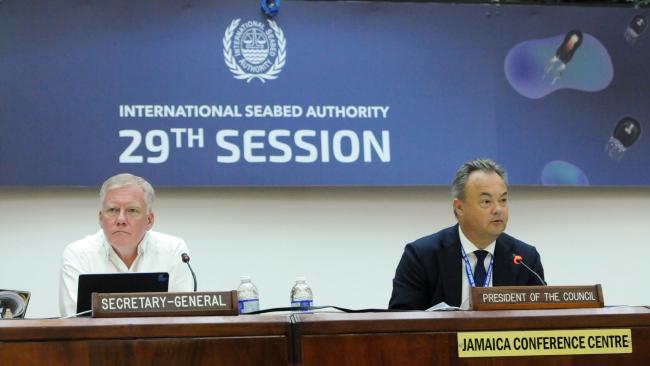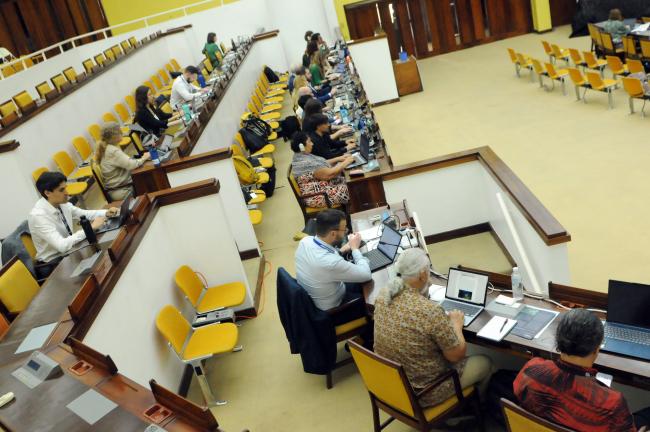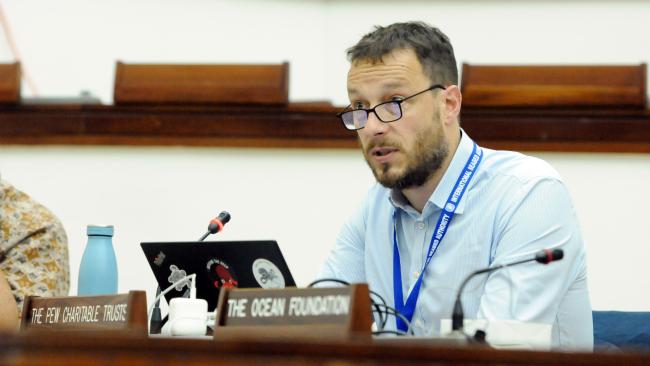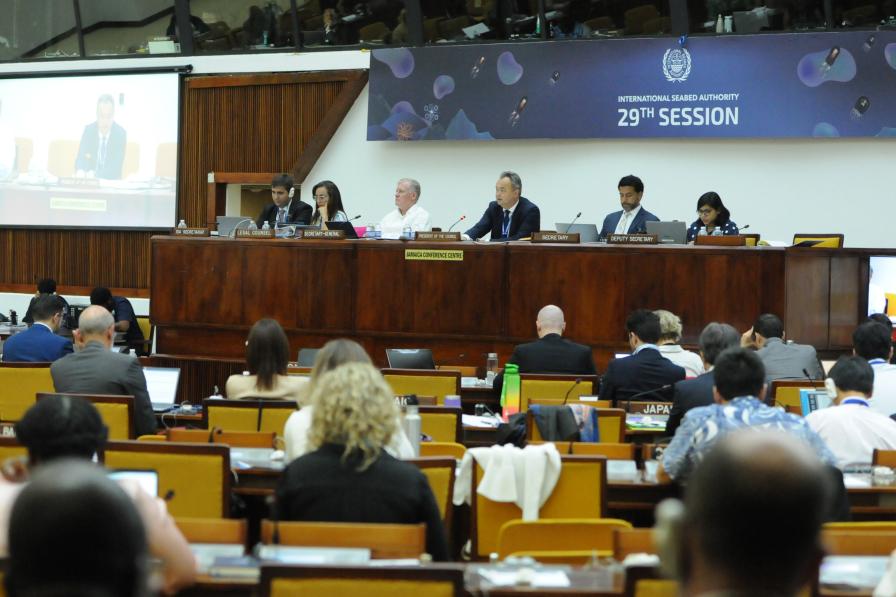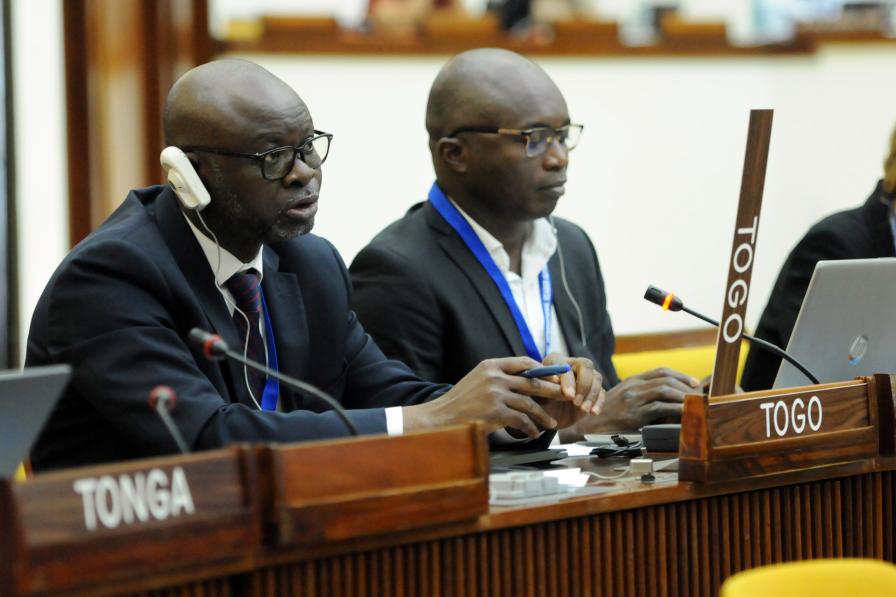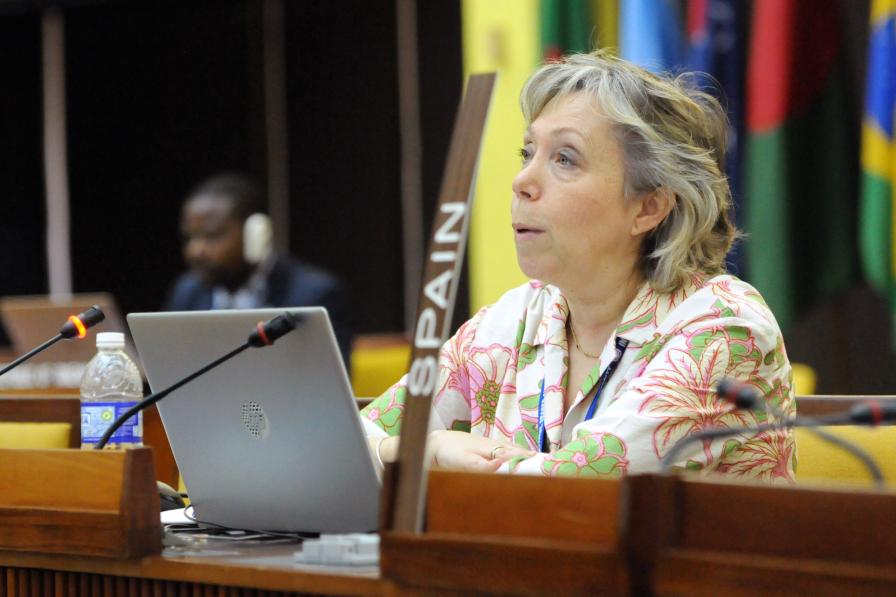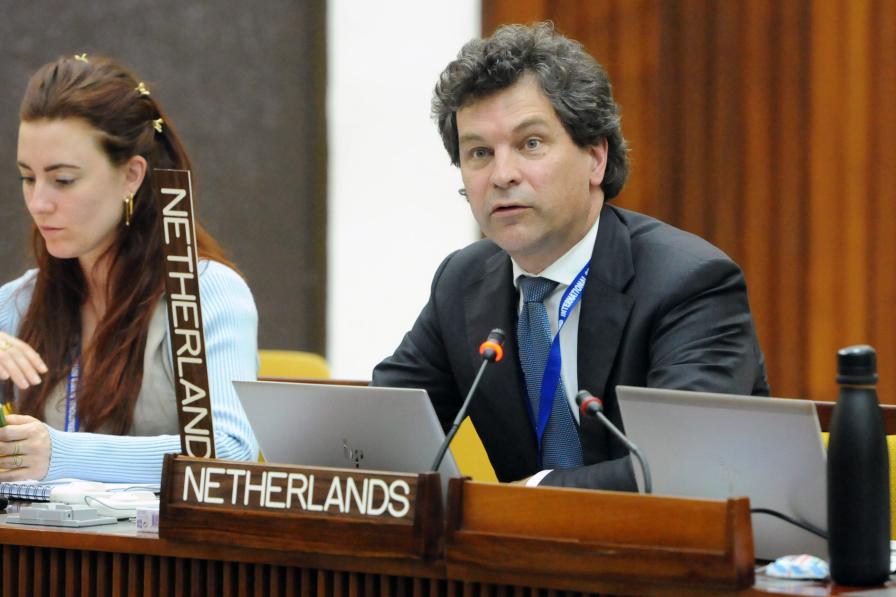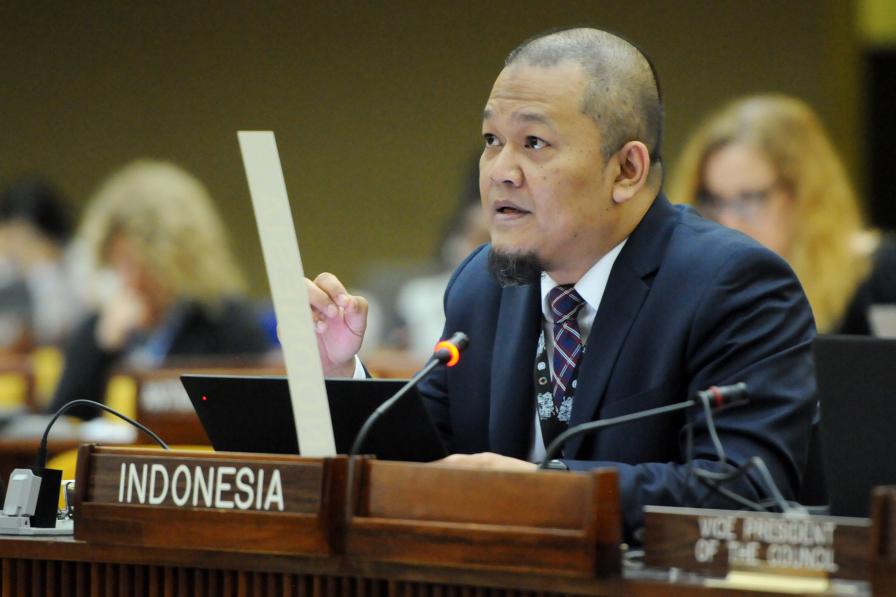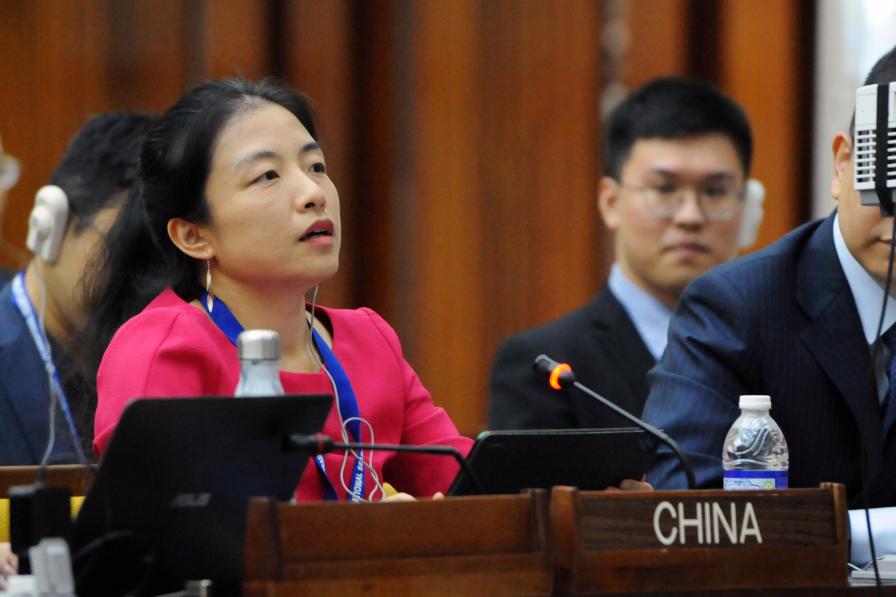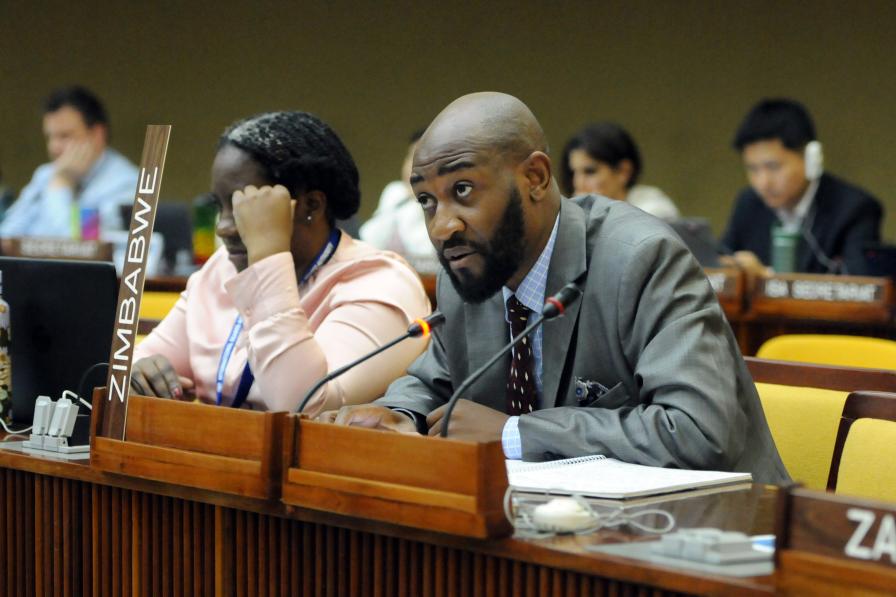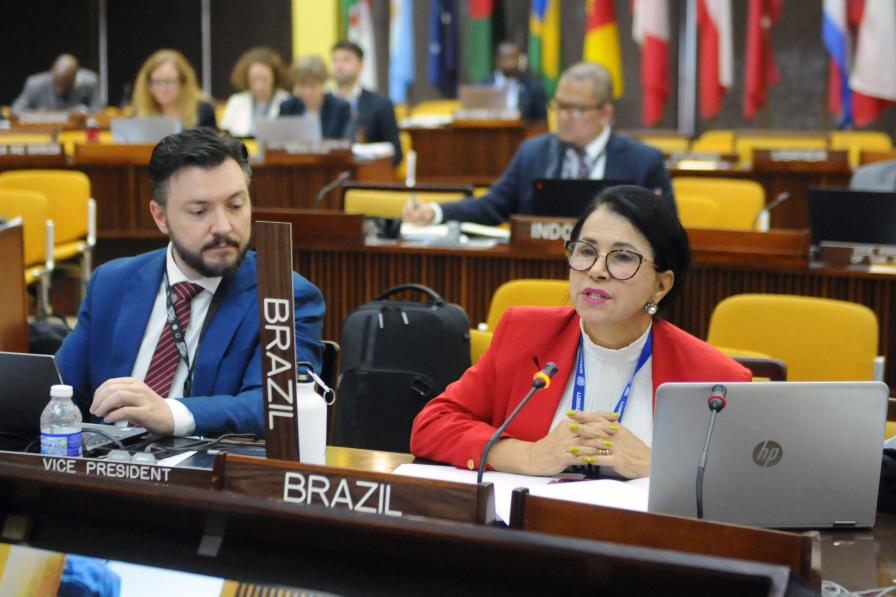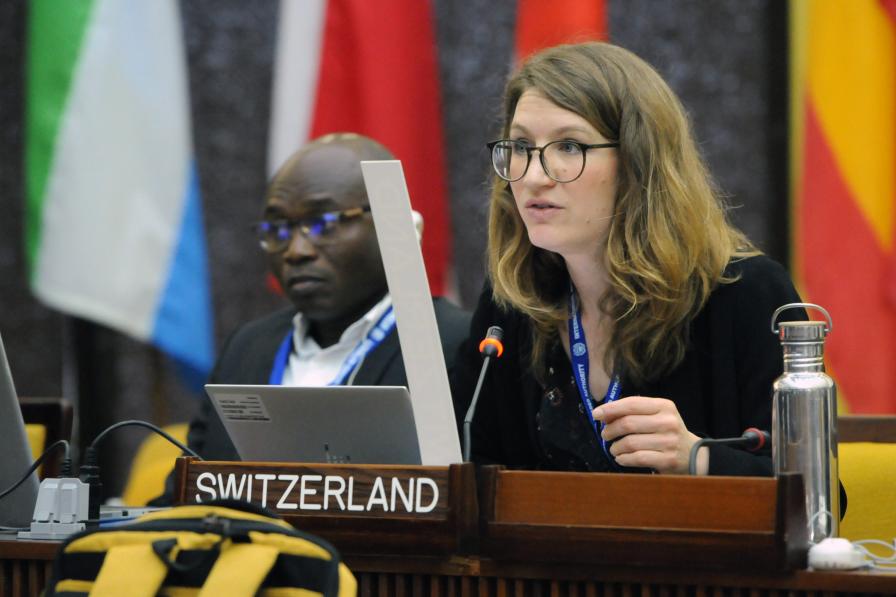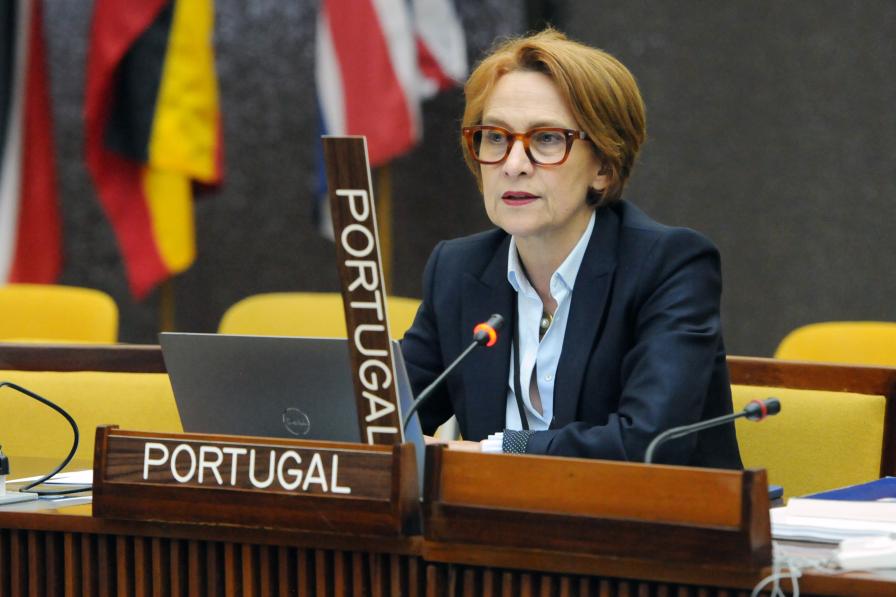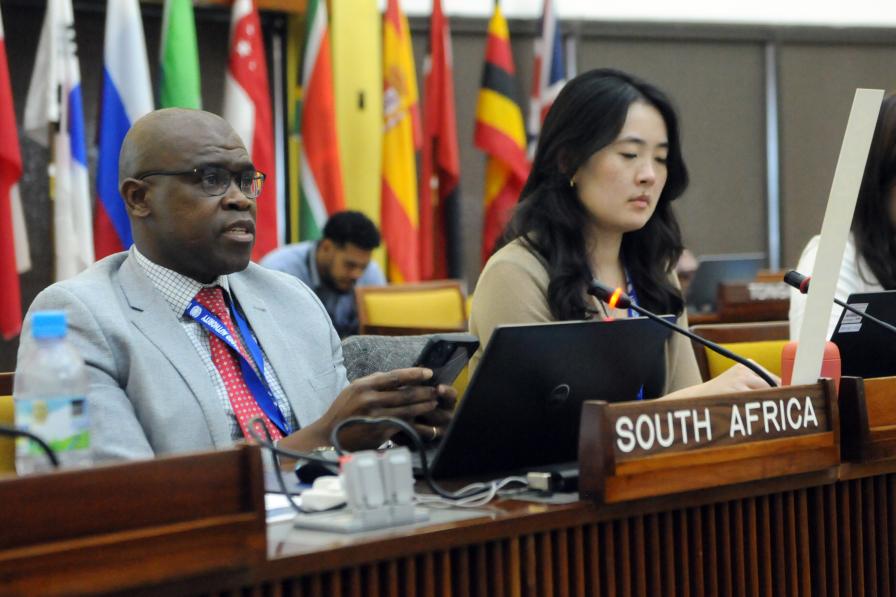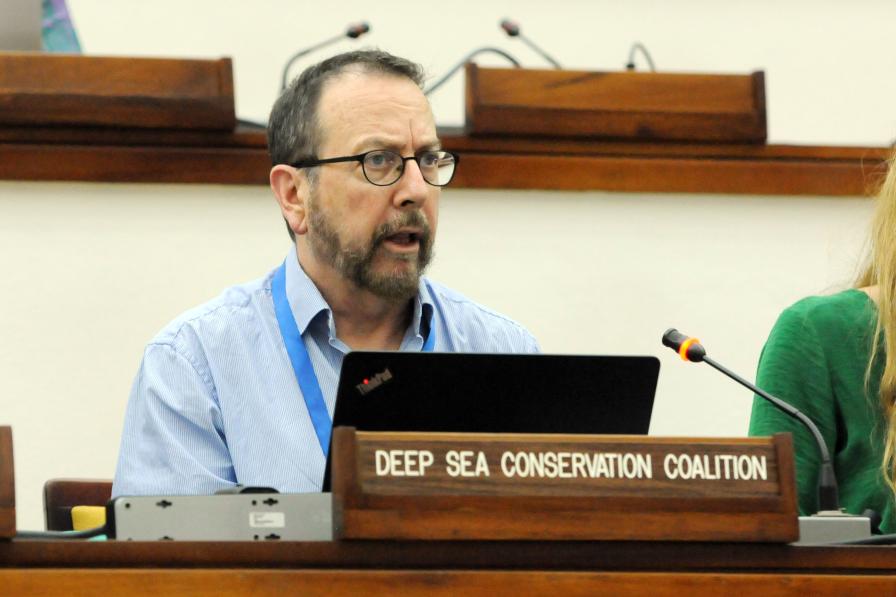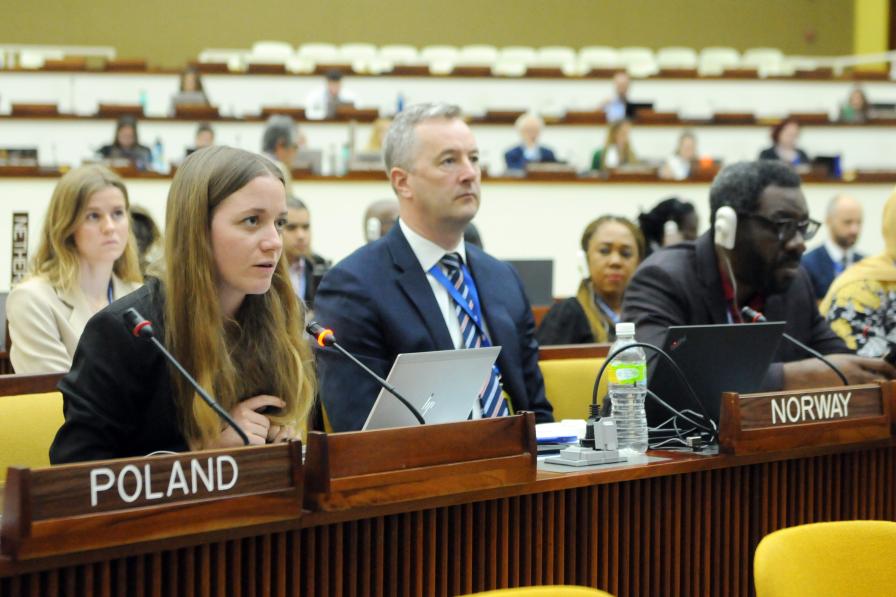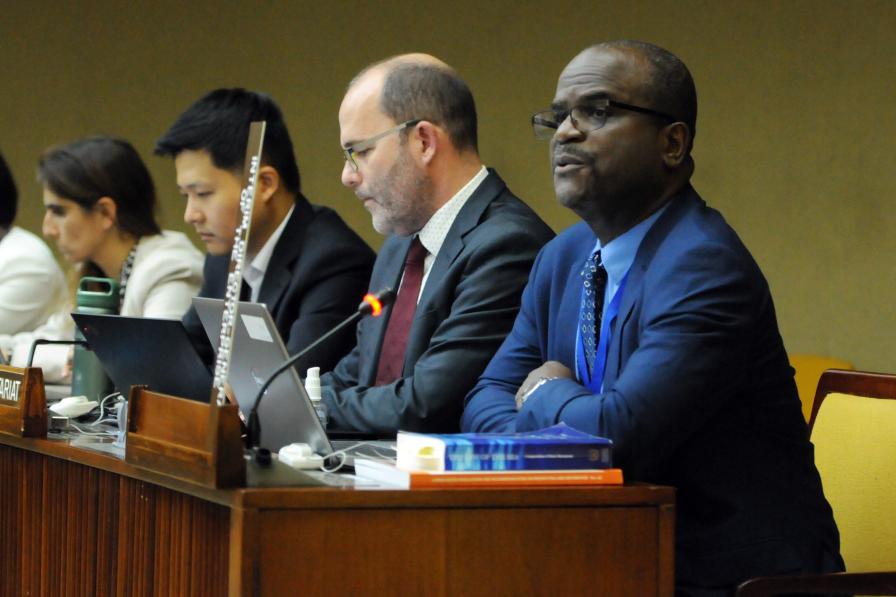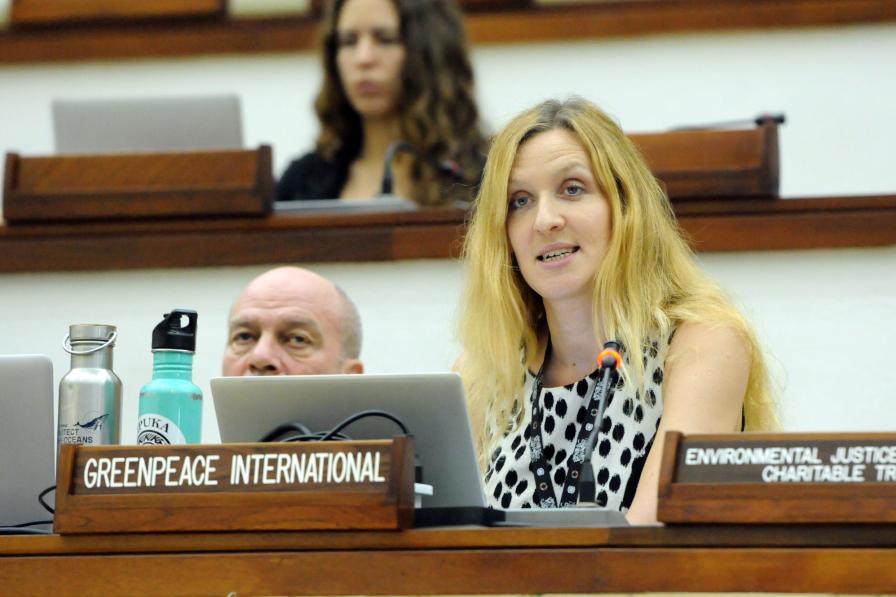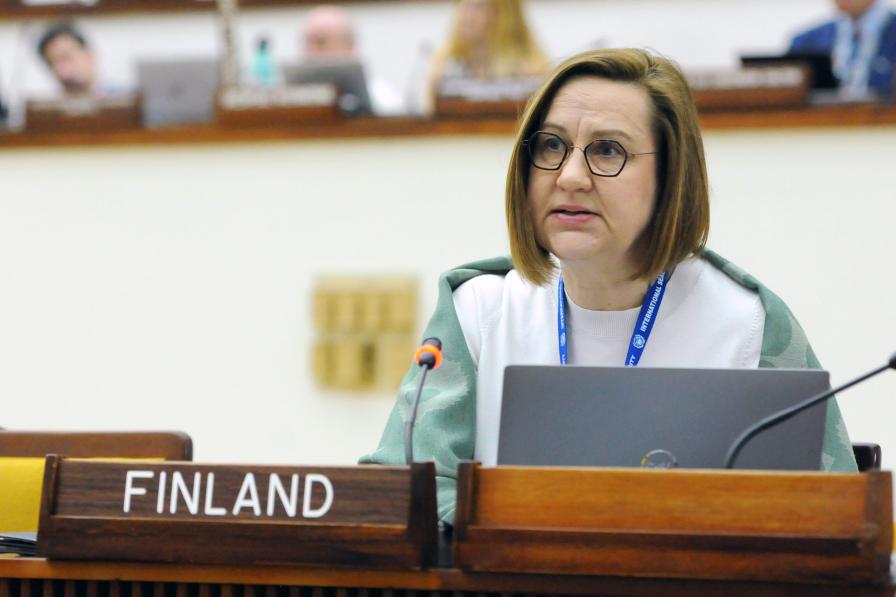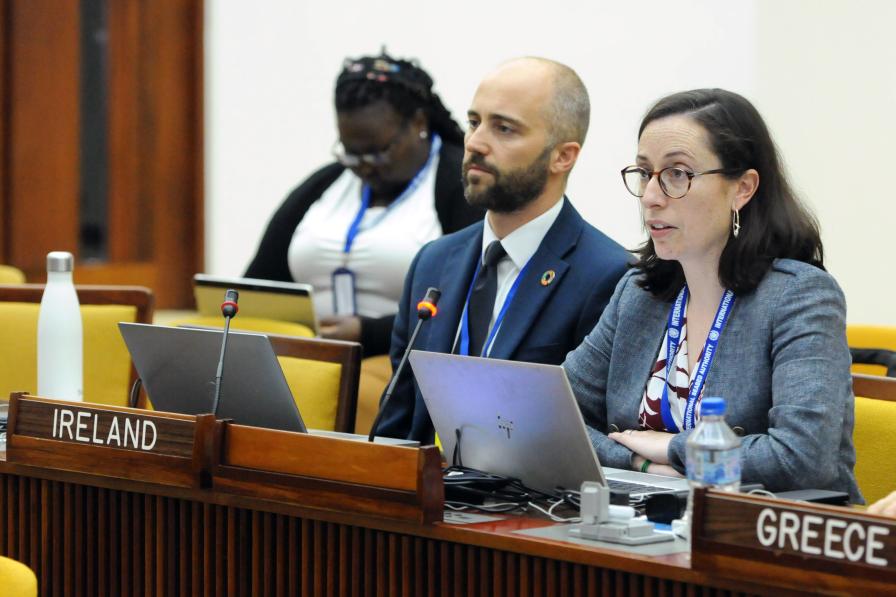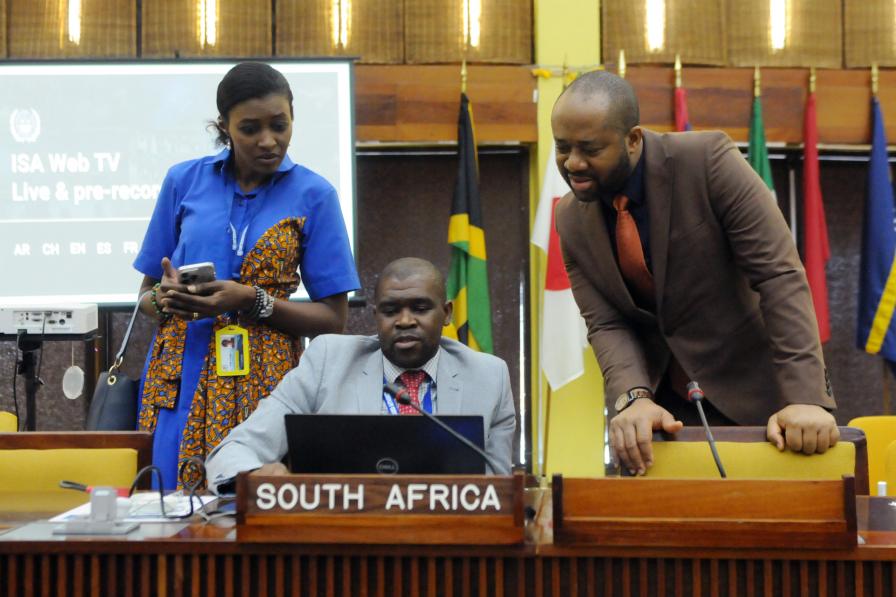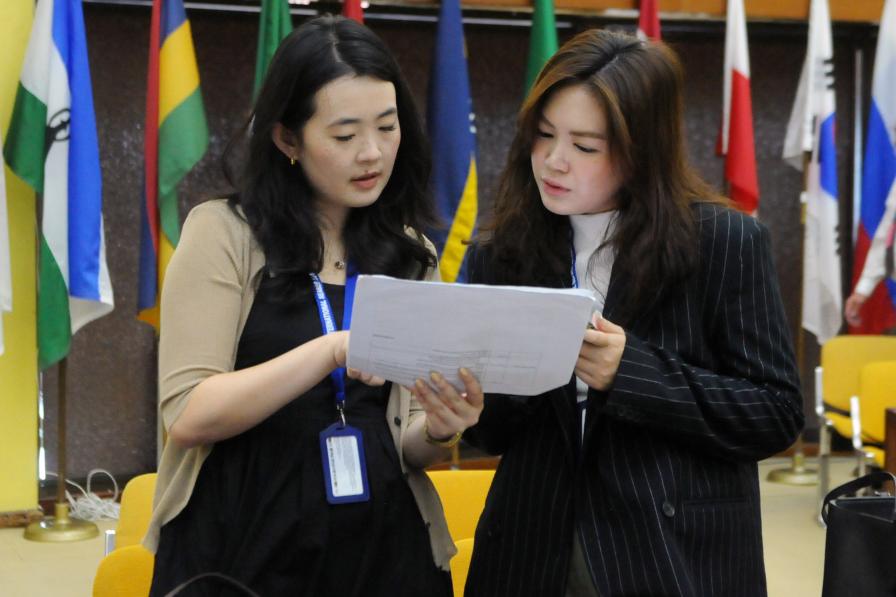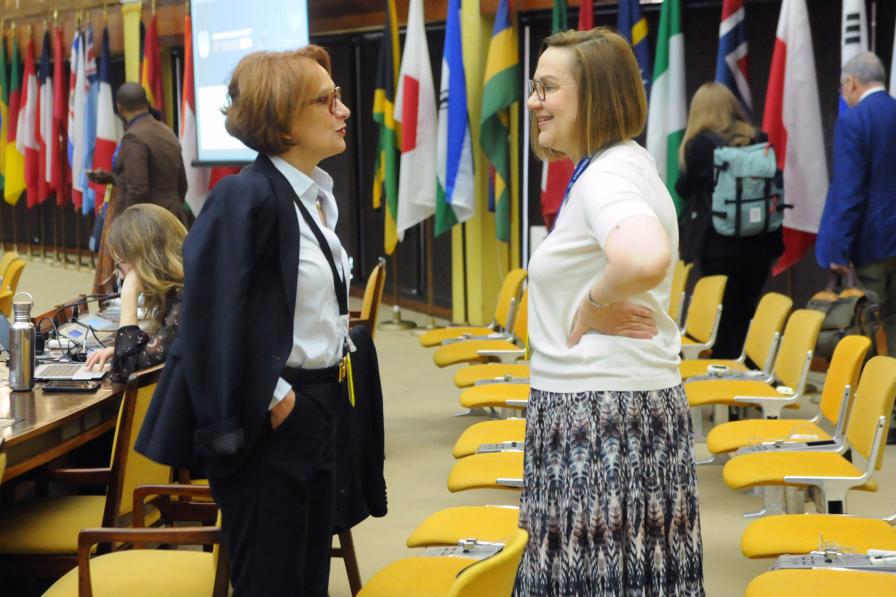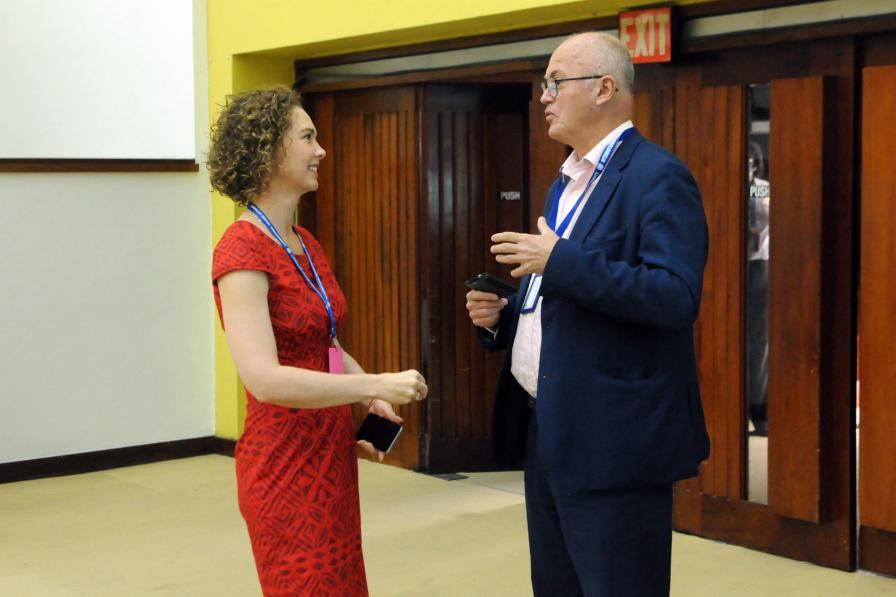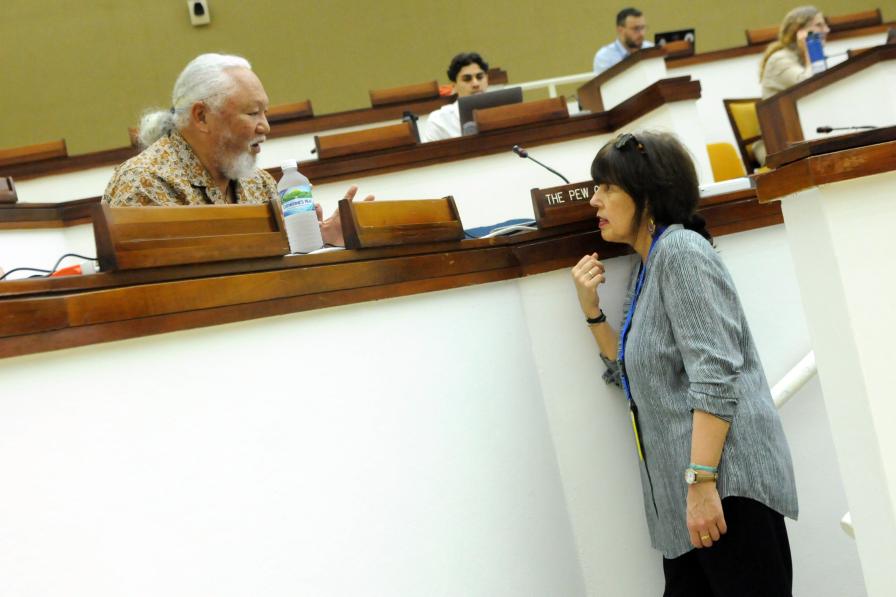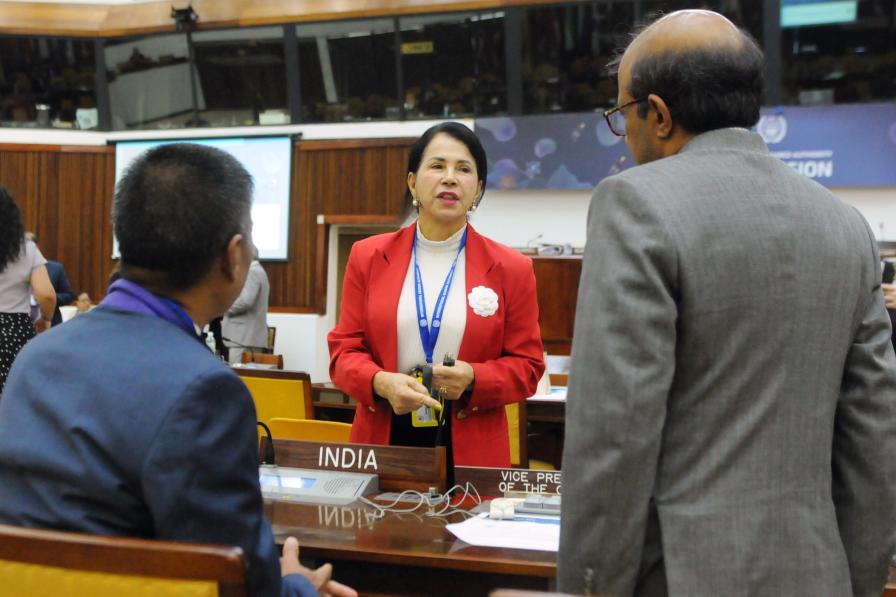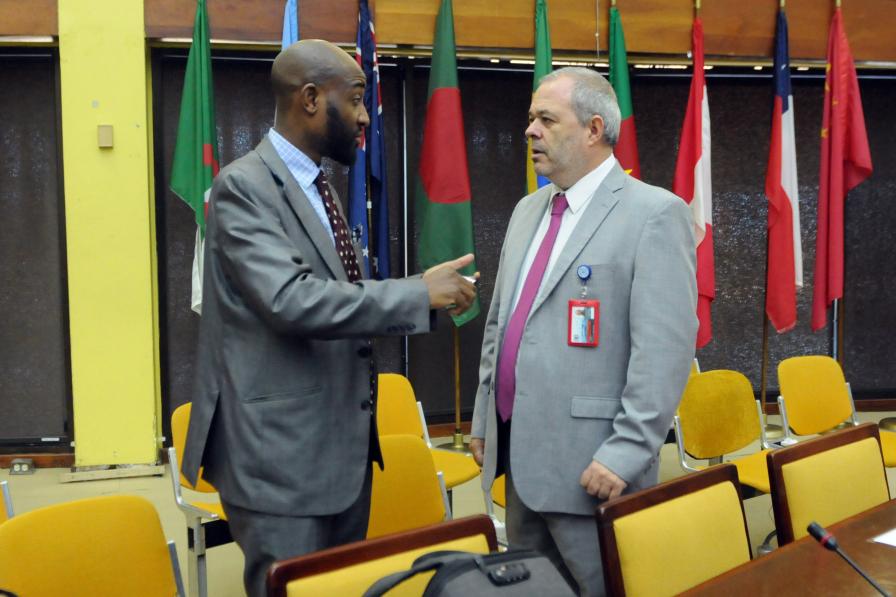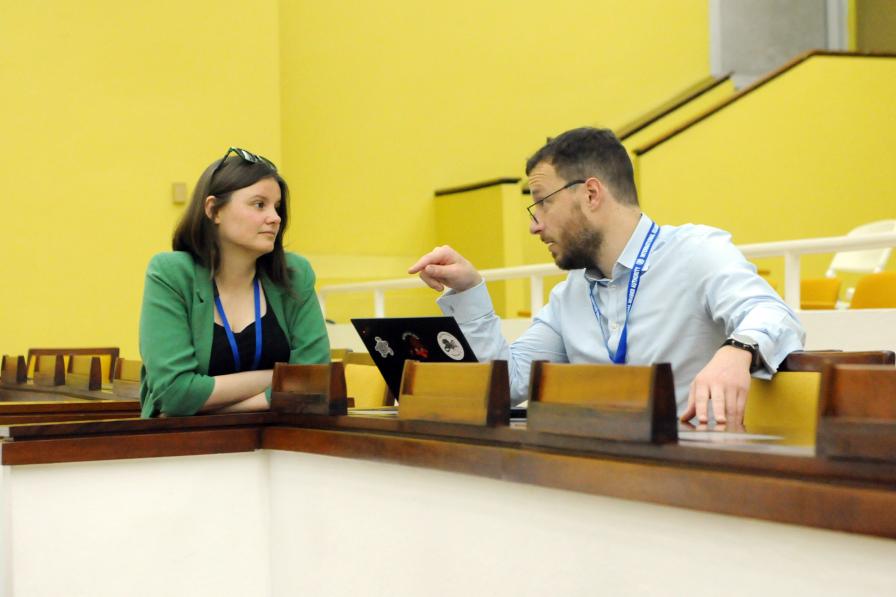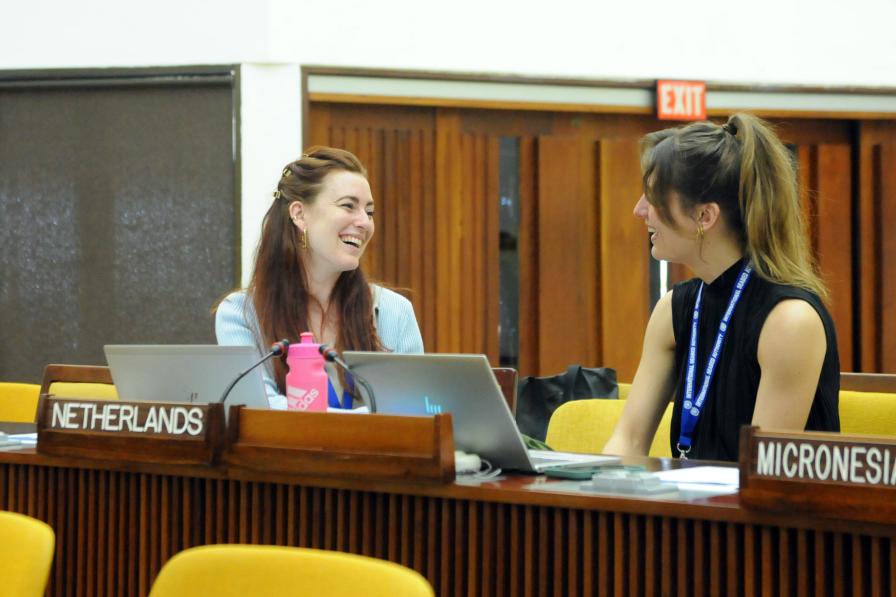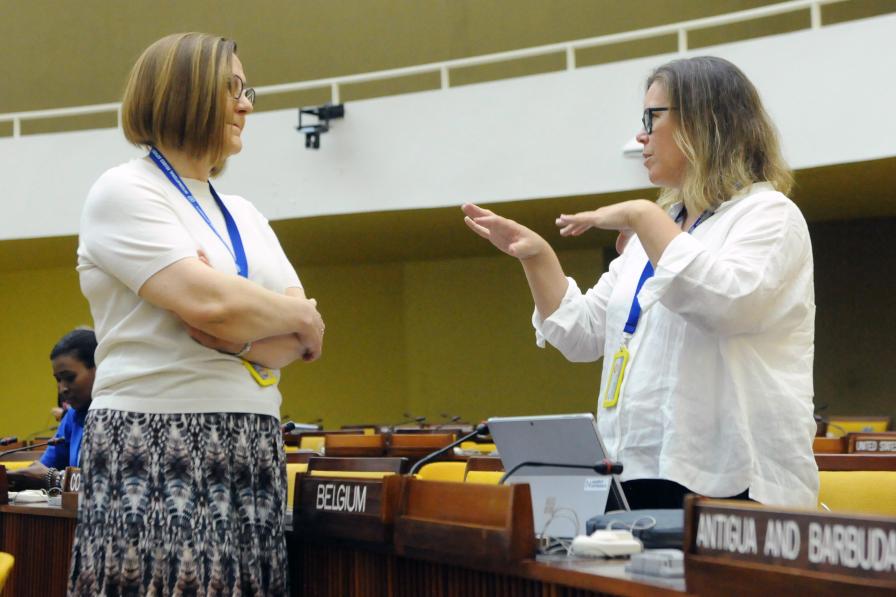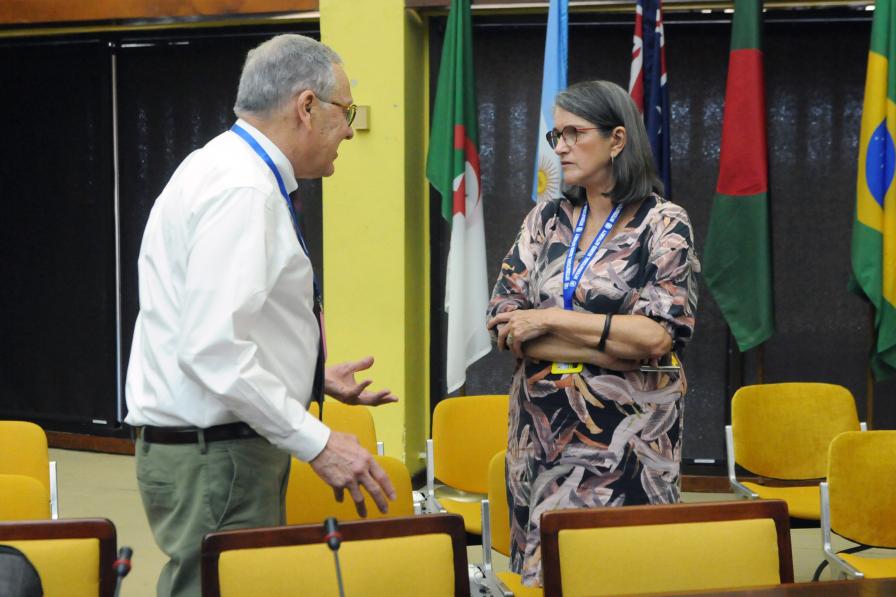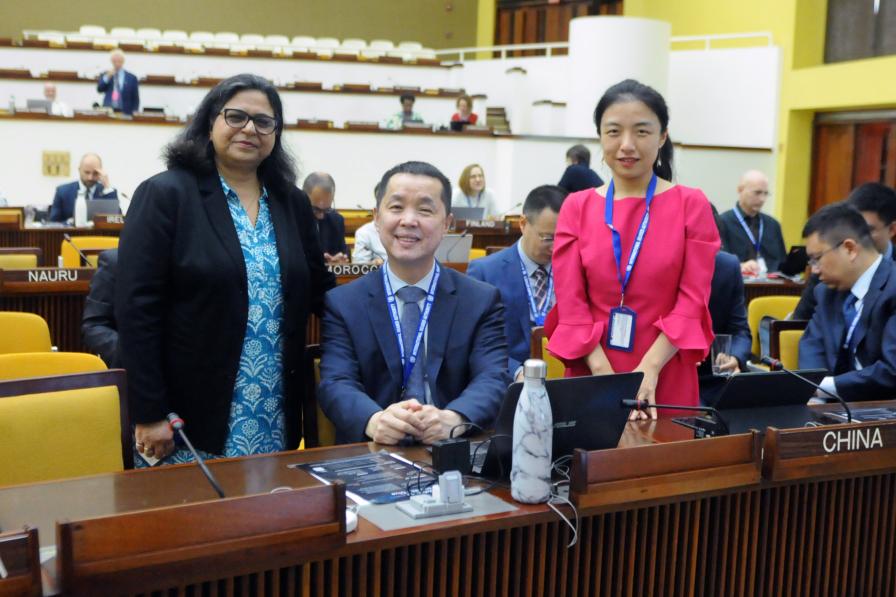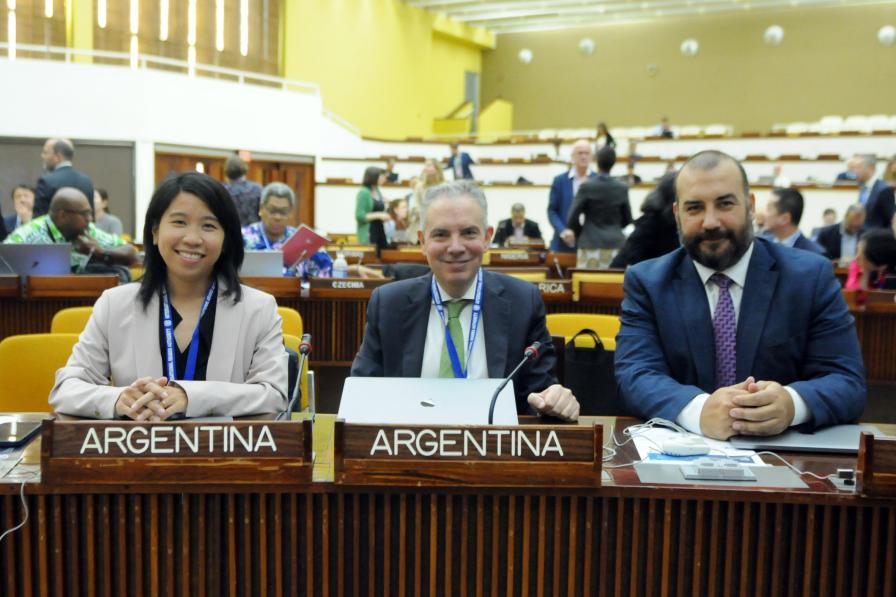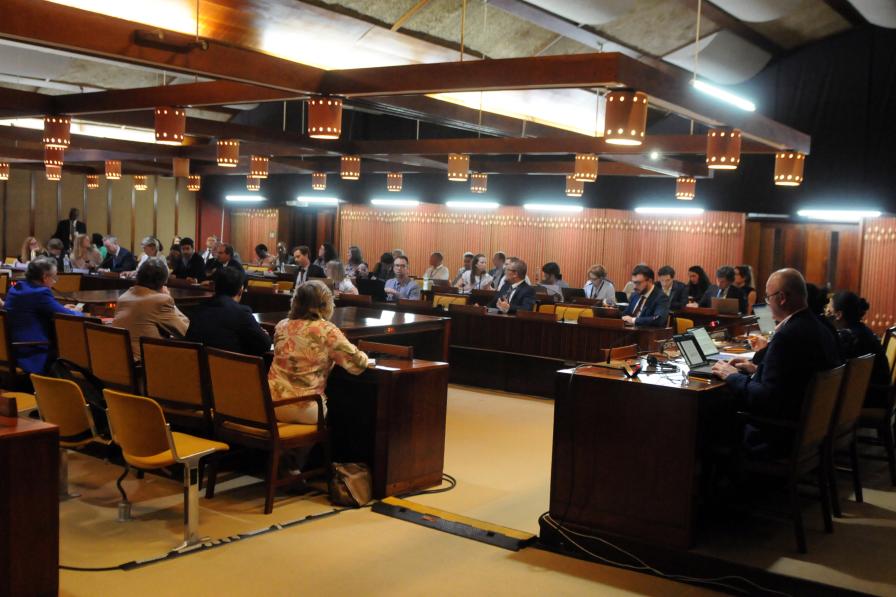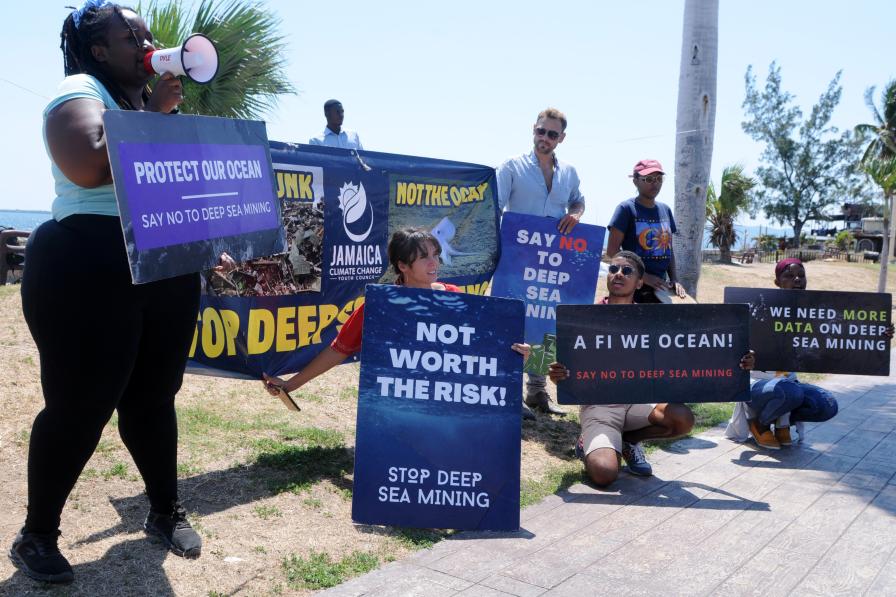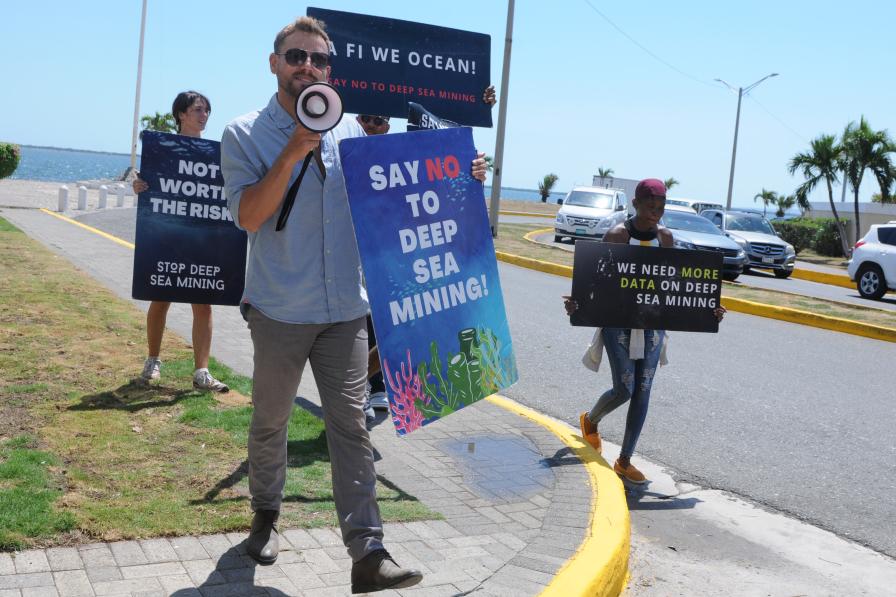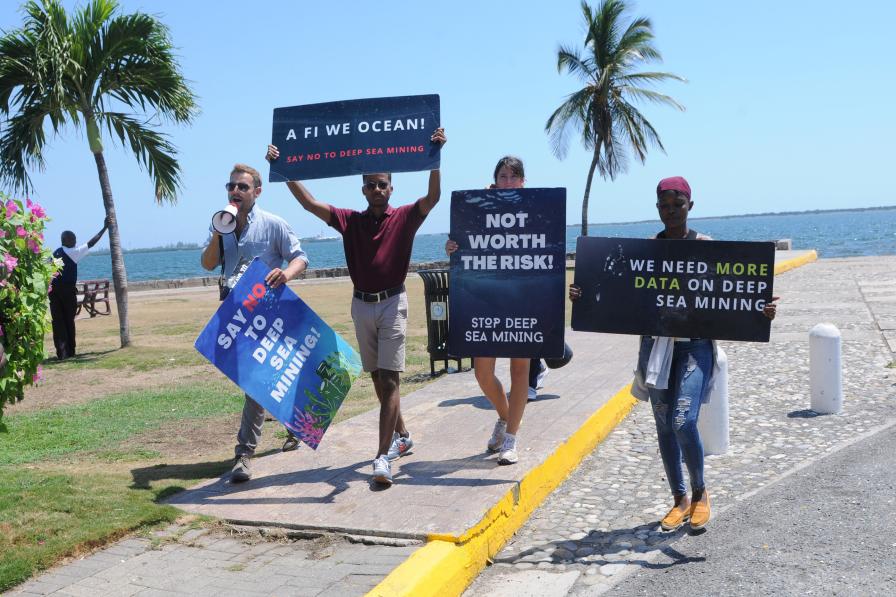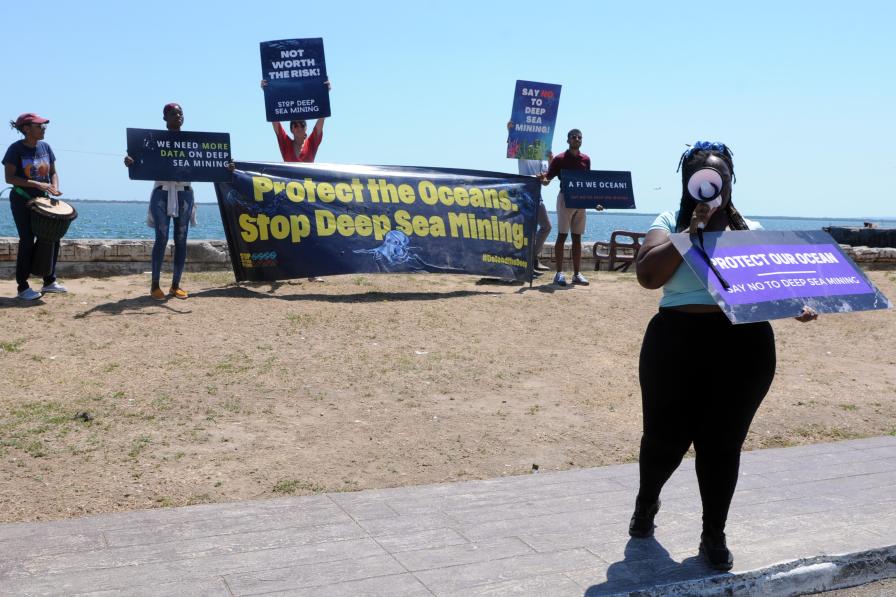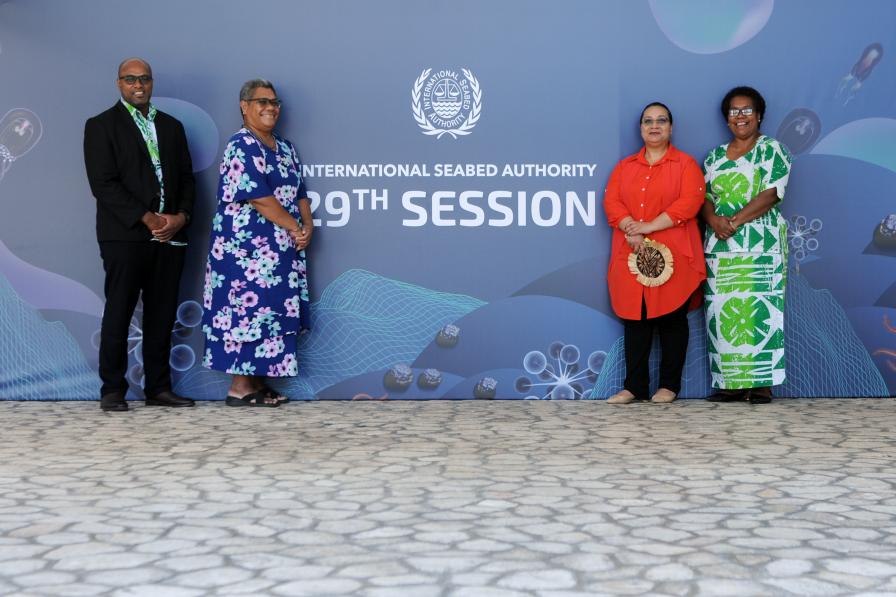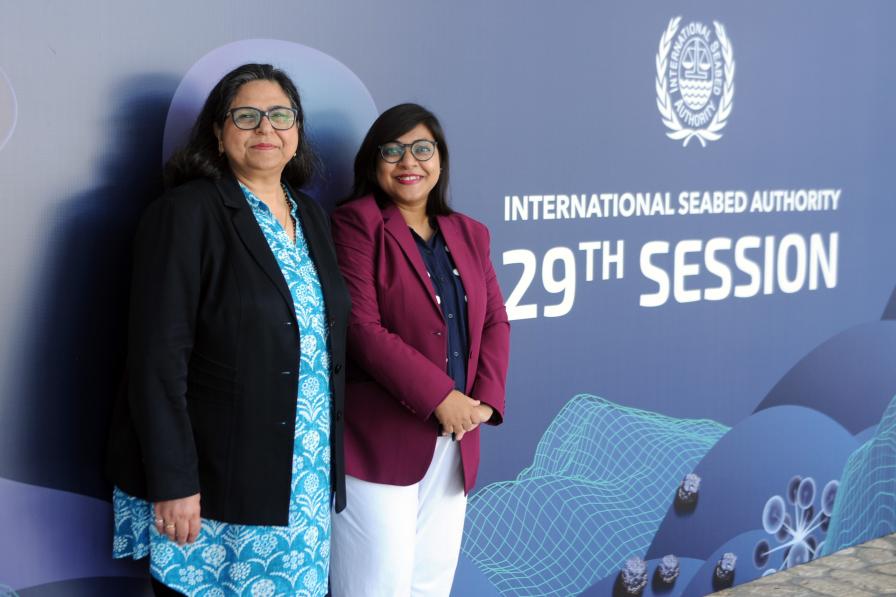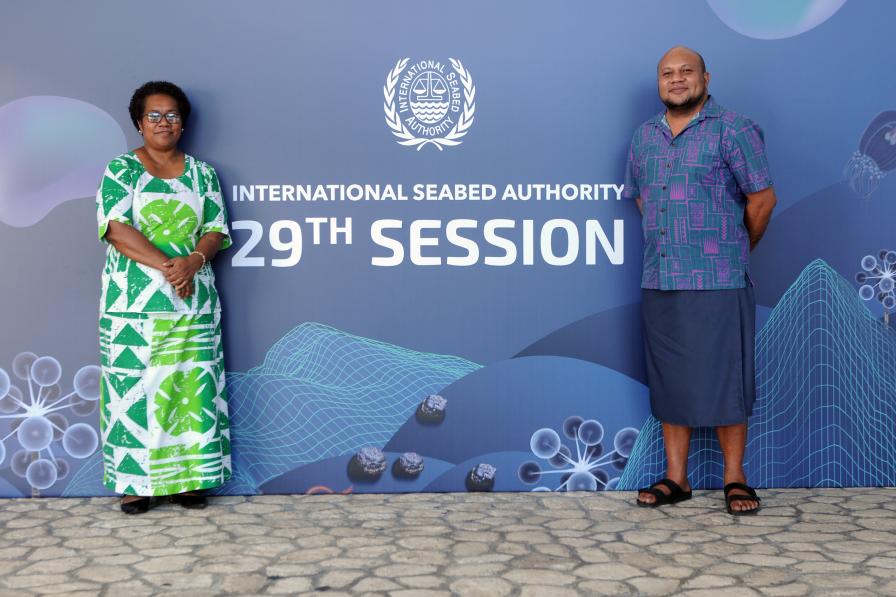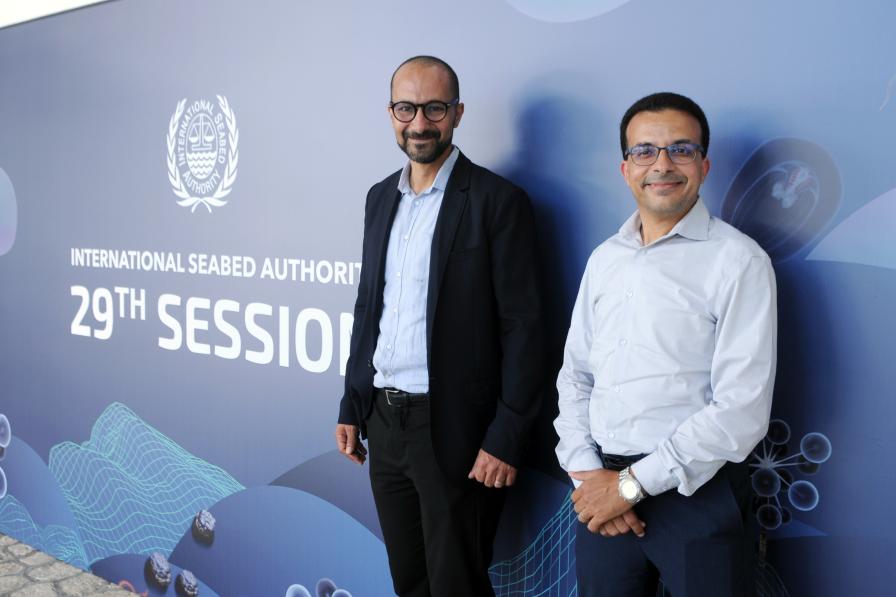Delegates took a break from negotiations on the draft exploitation regulations for deep-sea mining in the morning, addressing standing items on the International Seabed Authority (ISA) Council’s agenda, including cooperation with other relevant organizations, and the report of the Chair of the Legal and Technical Commission (LTC). Council members further agreed to add an agenda item for the July 2024 session, titled: “Proposal to the Assembly of a list of candidates for the position of Secretary-General.”
ISA members approved the memorandum of understanding (MoU) between the ISA and the Food and Agriculture Organization of the UN (FAO). They then focused on cooperation with the Commission of the Convention for the Protection of the Marine Environment of the North-East Atlantic (OSPAR Convention). Discussions focused on the OSPAR Commission’s decision to extend the scope of the North Atlantic Current and Evlanov Sea basin marine protected area over the Area.
Some members urged respecting ISA’s mandate and emphasized that seabed protection should not be achieved by extending OSPAR’s responsibilities but through the extension of regional environmental management plans (REMPs) in the Area. Many members, including OSPAR contracting parties, stressed the ISA and OSPAR have clear mandates, which sometimes have complementary competences, including in areas beyond national jurisdiction. They underscored that any OSPAR decision is only binding to its contracting parties and emphasized that the 2010 MoU between ISA and OSPAR offers the necessary framework for cooperation. The Council took note of the report.
On the report of the LTC Chair, many delegates congratulated the LTC for its hard work and progress, in particular on: contractors’ training programmes; developing criteria for identifying non-compliant contractors or those at risk of non-compliance; environmental threshold values; and the development of a standardized procedure for REMPs, including a template of minimum requirements.
Some members reiterated that the Council should be informed of the names of contractors who fail to comply with their obligations, highlighting the need for transparency. Others called for open LTC meetings on environmental thresholds, noting an inclusive process can greatly benefit their development. A few delegates emphasized that no application for a plan of work should be considered until concluding discussions on environmental thresholds.
In the afternoon, delegates convened an informal setting to continue discussions on the draft exploitation regulations, as contained in the consolidated text.
On the environmental performance guarantee (Regulation 26), delegates discussed, among other things: when the contractor shall lodge the guarantee; provisions on installments; grounds for reviewing and updating the guarantee amount; and whether the guarantee should be restricted to closure activities or applied widely for any liability.
On maintaining commercial production (Regulation 28), delegates discussed, without reaching consensus, a provision noting that the contractor shall immediately suspend or reduce production when it is required to protect the marine environment “from serious harm or a threat of serious harm.” An observer suggested adding the next steps to be followed in cases of non-compliance.
On the reduction or suspension in production (Regulation 29), a member noted that the rationale for the reduction or suspension should be provided, as well as a timeframe for the relevant notification. Another stated that some elements from an alternative previous version of the draft regulation, such as minimizing waste generation, should be incorporated into the regulatory framework.
On the procedure for suspensions in exploitation activities (Regulation 29 bis), a delegate supported the standalone regulation, noting it streamlines various regulations addressing forms of suspension. He noted this would prevent cases where contractors suspend operations indefinitely to avoid closure requirements, adding that such cases occur in land-based mining.
On risk reduction principles (Regulation 29 ter), delegates discussed whether the term “incident” should be used and defined. They further discussed whether the contractor should reduce risks associated with harm or danger of harm to people, the environment, or material assets to the point where the cost of further risk reduction would be “grossly” disproportionate to the benefits of such reduction.
On safety, labor, and health standards (Regulation 30), some delegates suggested referring to “relevant” rather than “applicable” rules and standards. Another queried what would constitute “relevant national laws” in the case of several sponsoring states. An observer proposed that international maritime safety and navigation rules should apply to all ships and voyages engaged in activities in the Area.
On human health and safety management system (Regulation 30 bis), some delegates suggested adding a provision on independent verification of such systems by an internationally recognized provider. A member cautioned against including a provision on notification over every modification to the safety management plan.
On reasonable regard for other activities and infrastructure in the marine environment (Regulation 31), some members supported the requirement to identify both current and planned uses of the marine environment. Delegates further noted that it is unclear whether reasonable regard obligations encompass due diligence.
On preventing and responding to incidents (Regulation 33), several members emphasized that, in case of an incident, contractors shall issue the relevant notifications no later than 24 hours after they become aware of such an incident. A member noted that “incident” is not defined in the regulations.
On notifiable events (Regulation 34), some delegates suggested reinserting a provision on seeking instructions from the compliance committee after the Secretary-General receives a contractor’s notification on an incident.
With one day left for the first Council session for 2024, delegates are taking stock of progress and the work still ahead.
To receive free coverage of global environmental events delivered to your inbox, subscribe to the ENB Update newsletter.
All ENB photos are free to use with attribution. For the 1st Part of the 29th Annual Session of the ISA, please use: Photo by IISD/ENB - Diego Noguera
